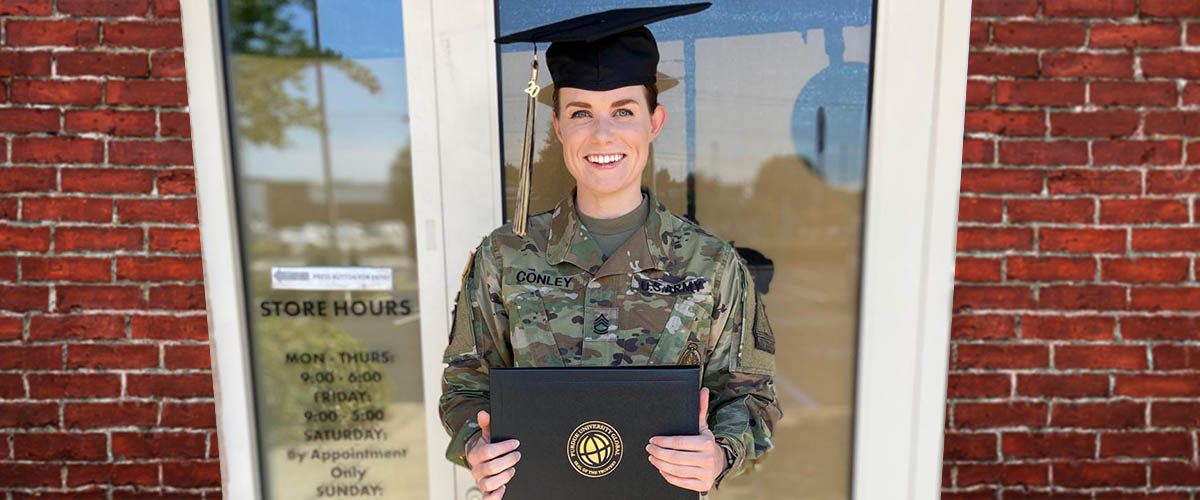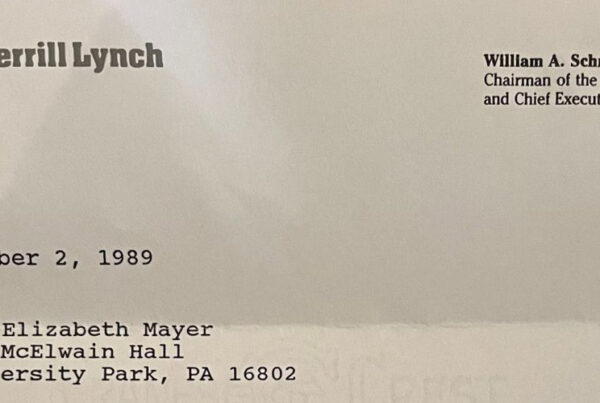
The other day I was on LinkedIn reading my feed. I saw an interesting picture. It was a picture of a US Army soldier with a graduation cap. Combined with the title, “Beat the Odds,” I was intrigued. It is Brittany’s wonderful story of perseverance and personal commitment. And she uses four repetition techniques of anaphora, anadiplosis, epanalepsis, and epiphora and to improve the narrative impact (see below the story for the repetition examples).
As a fellow US Army veteran, I specifically contacted Brittany to congratulate her. She graciously gave me permission to share her story to beat the odds.
Here it is. Enjoy…
I Beat the Odds
I beat the odds.
I was born to a teenage parent. The statistical chance of becoming a teenage parent myself was high, as well as a lower IQ and academic achievement, and being socioeconomically disadvantaged. My parents tried but between their battles of drug/alcohol abuse, mental illness, and domestic issues inside my home, I left at the age of 16. I became emancipated at 17 and barely graduated high school.
Then one day, I decided to bank on someone else, and I committed to the National Guard. The #nationalguard committed to me. All the leaders I came across invested in my success and pushed me to be better. Better for my family, my community, my organization, and my country.
They afforded me so many different opportunities from being a combat medic to reclassify as a journalist. From making sure I was employed. To assisting me when I was a “tour of duty” Soldier and went to Afghanistan with the South Dakota National Guard. To helping me move to South Carolina from Washington when I needed to be closer to family.
It only seems fair at this point to thank the National Guard and all the leaders who stood behind me, encouraging me, and motivating me. I obtained my bachelor’s in communications.
Thank you, National Guard.
Beat the Odds Story graciously provided by
Brittany Conley
LinkedIn profile
Repetition Examples
Here are the quick details. If interested in reading more about improving (dramatically) your communication impact, read about a variety of figures of speech and more story examples. Click here.
Anaphora
The word <my> is repeated at the beginning of each phrase/clause.
– <my> family, <my> community, <my> organization, and <my> country
Anadiplosis
The word <better> comes at the end and then starts the next sentence.
– pushed me to be <better>. <Better> for
Epanalepsis
The words/phrases first used follow in the next sentence for the second instance.
– I <committed> to the National Guard. The #nationalguard <committed> to me.
– I was born to a <teenage parent>. The statistical chance of becoming a <teenage parent> myself was high,
Epiphora
The word <me> comes at the end of each phrase or clause.
– behind <me>, encouraging <me>, and motivating <me>
MORE EXCELLENT BUSINESS STORIES TO READ
- Stop Blaming Steve, a story from Brene Brown (read)
- Ride Space Mountain. It Won’t Kill You (read)
- The Last Orange – A Story Of Conflict Resolution, Guest – Jamie Notter (read)
- All story examples (go now)
FURTHER READING ON BUSINESS STORYTELLING
- Turn Your Everyday Experiences into Engaging, Powerful Stories (read)
- Add Suspense to Your Story with “Near-Impossible Goals” (read)
- “Pause” with Purpose in Speaking, Training, and Storytelling (read)
- In Storytelling, Balance Emotion and Benefit (read)
- Epizeuxis – Increase Impact with this Type of Word Repetition (read)
- All Business Storytelling Articles & Posts (go now)
Photography Source: Brittany Conley
#chiefstoryteller #storytelling #career #graduation
Improve dramatically your public speaking, presentation, storytelling, or data storytelling skills?



